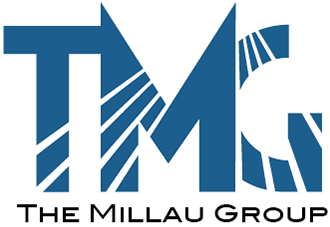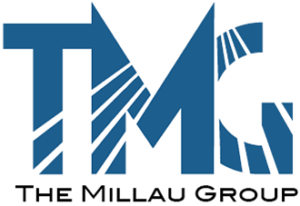Six Sigma and Your Sales Process
I noticed organizations continually invest time and money to improve sales team effectiveness, but which one? There are hundreds of sales training companies offering thousands of programs in all aspects of selling: call planning, presenting, negotiating, managing key accounts, questioning and more. I concluded they didn’t scratch the itch. There had to be a better, less confusing and practical way to improve sales training.
I reckoned they’re missing the boat. These organizations are often neglecting something as fundamental as basic selling skills. My engineering genes kicked in and determined all these companies needed is a systematic method to continually improve their sales process. It was clear that they don’t have a sales process, and identifying it as a problem is the first step toward fixing it.
Looking back at my personal Six Sigma program I realized that if those principles work in manufacturing, the same systematic approach to continuously and intelligently improve manufacturing should also work in a sales process. It would increase sales, decrease costs and improve productivity.
What is Six Sigma?
Everyone understands the term “sales process.” Few, however, can actually describe their sales process from a Six Sigma perspective. I want sales executives to get back to the basics.
Six Sigma is a structured, disciplined and rigorous approach to process improvement. Six Sigma’s goal is to increase profits by eliminating variability, defects and waste. Although Six Sigma is typically thought of in a manufacturing environment, its principals apply to all processes – including sales processes.
Here’s how Six Sigma applies to selling:
Let’s start with this question: How well does your sales process meet your expectations relative to variability, defects and waste? Variability by definition lacks a consistent, systematic approach to selling. I see this all the time, which results in essentially every member of your sales team pursuing opportunities differently. How would that work in the shipping department?
Do you have variability in execution?
Here’s a simple test: Look at an active sales opportunity where the outcome is in doubt. This happens all the time. Then write it up as a case study and pass it out to your sales team. Ask, “What would you do next to move the sale forward toward a close?” How many answers would you expect to get? You know the answer.
Defects are lost sales, pure and simple. The Millau Group studies show the average closing rate across all industries is approximately 25%. What is your closing rate? A 25% closing rate is a 75% defect rate. Is that acceptable anywhere in your company? So why do we accept it in sales?
Resources are wasted when they’re not invested where they will produce the greatest return. What percent of your resources are currently being wasted? The math is painfully simple. You have a 75% losing rate. Do you see your company in the story so far? If you say “Yes,” Six Sigma will have a significant positive impact on your sales results.
Applying Six Sigma to Your Sales Process
Six Sigma has five key elements – define, measure, analyze, improve and control. (DMAIC). You’ll produce immediate, measurable results if you incorporate these elements into your sales process.
1. Define
First, what needs improving?
Identify the problem you want to solve. While variability, defects and waste are all critical, if you solve the variability problem, defects and waste will go away. Let’s focus on variability in execution as the problem we want to solve for the sake of this discussion.
2. Measure
Now that we’ve isolated variability as the problem we want to solve, we need to use facts and data to identify the root cause. If the execution of your sales process is based on data/facts and not gut feelings or emotions, gathering the data will be straight forward. If, however, your sales process is not based on data, this will not be possible. The good news is that you’ve identified a problem you can now eliminate.
How many of your pursuits are a good fit for your company is measurable data, i.e. in your sweet spot? If you have specific criteria on what makes a good fit and everyone in the sales team utilizes the criteria, then it’s very straight forward to identify what percent of pursuits are a good fit. If your sales process does not specifically state the criteria and how to use them to establish fit, a significant number of opportunities your salespeople pursue will not be a good fit. Predictably, defects and waste will be high.
3. Analyze
Based on the measure phase in our example, we have identified that salespeople do not ensure customers are a good fit prior to investing company resources. Analyze the situation using the data to determine the root cause(s) of the stumbling block. Why aren’t they doing this? If you were to ask your sales team, “What criteria do you use to determine if a customer is a good fit?” How many answers would you get? If it’s multiple, you’re close to discovering the root cause of the problem. Often the root cause can be traced to the fact they simply don’t know what makes a good fit, or they don’t consistently and systematically filter their pursuits based on fit.
4. Improve
Develop potential solutions after the root cause has been identified. For instance, it can be as simple as identifying what makes a good fit, communicating it to the sales team and ensuring compliance. Test different solutions to validate your approach – use data, not emotions or gut feelings. Test with a control group of salespeople to verify the impact of your solution.
5. Control
Finally, implement your solution. Use data to determine the extent of the improvement and to ensure gains are not lost over time. This is a critical stage. There is a tendency to implement the solution and stop. Leverage the key elements of Six Sigma to drive continuous process improvement; it’s not a one-time event.
I detail this in a new book, “The Sales Checklist,” to be released later this year. At first glance the book will seem almost ridiculous in its simplicity compared to all other conventional sales training available and some might think it’s a little crazy to those who have spent years investing in, or selling, the latest sales training on the market. Rest assured, there is sophistication in simplicity. It has taken three years to simplify the checklist.
Dave Varner has worked in sales training for 20 years, but that’s not where he earned his stripes. He started out in the trenches, as a robotic systems sales engineer calling on companies in the machine tool and manufacturing industries. He changed careers to work for a major national sales training organization before forming The Millau Group. His engineering and manufacturing mindset drew him to looking at ways to apply Six Sigma principles to selling.

